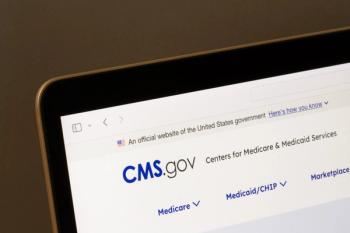
IOM proposes framework for tracking chronic diseases
Federal regulators should take the lead in creating a national system to keep tabs on chronic diseases and provide guidance for stakeholders across the country, the Institute of Medicine (IOM) announced.
Federal regulators should take the lead in creating a national system to keep tabs on chronic diseases and provide guidance for stakeholders across the country, the Institute of Medicine (IOM) announced.
The IOM released a framework for building a national chronic disease surveillance system focused primarily on cardiovascular and chronic lung disease. The system should be capable of providing data on disparities in incidence and prevalence of the diseases by race, ethnicity, socioeconomic status, and geographic region, along with data on disease risk factors, clinical care delivery, and functional health outcomes.
According to the IOM report, surveillance systems already collect a wealth of data on chronic diseases, but what’s missing is a national effort to “integrate current and emerging data on chronic diseases and generate timely guidance for stakeholders at the local, state, regional, and national levels.
“Without a national surveillance system, the gaps in current monitoring approaches will continue to exist, making it more difficult to track the nation’s health status despite advances in technology and data collection,” the IOM report concluded.
The IOM proposed that the Department of Health and Human Services (HHS) lead the effort, as it already is responsible for the funding and conduct of numerous surveillance efforts and can bring together stakeholders from the public and private sectors, and from numerous geographic areas.
In its design, HHS should work to develop a system that can provide various types of data that individually and collectively can be used to understand the continuum of disease prevention, progression, treatment, and outcomes.
The American Heart Association (AHA) has applauded the framework.
“With a coordinated system, we can determine which strategies have the greatest impact in reducing the financial and health burden of cardiovascular disease,” AHA President Gordon Tomaselli said in a statement. “These recommendations will enable us to thread the labyrinth of data on heart disease and stroke and close critical gaps in the treatment and prevention of America’s leading health threats.”
The IOM points to new surveillance tools that are emerging with the growing use of health information technologies, such as electronic health records (EHRs), which can economically and completely capture details of care events and processes. Expanding the use of EHRs in surveillance will encounter challenges, such as the relatively low numbers of hospitals and practices now using the technology. But use of EHRs is expected to expand as healthcare reforms advance, necessitating their inclusion into plans for a national surveillance system.
At the same time, patients are recording a wealth of health data on their own, with or without initiation or direct support from healthcare providers or organized care systems. This trend has its roots in the emergence of the internet and new online forums for social relationships.
Increasingly, this information is being commingled with other health data maintained within large electronic data stores and used for population surveillance, performance assessment, predictive modeling, and care management. Although these sources have yet to be fully assessed, the potential is great that some, if not all, of them may complement and extend chronic disease surveillance efforts, although privacy issues must be addressed.
Newsletter
Pharmacy practice is always changing. Stay ahead of the curve with the Drug Topics newsletter and get the latest drug information, industry trends, and patient care tips.





















































































































































